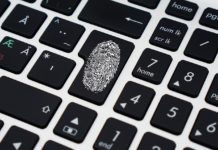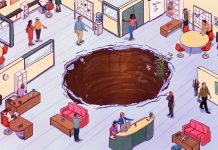This article explores the five biggest cyber-attacks in history that pushed global tensions to the brink of conflict. It uncovers how digital warfare nearly triggered large-scale geopolitical crises, including World War III.
What if the next world war begins with a line of code instead of a missile? According to the World Economic Forum, cyberattacks now rank among the top global threats to humanity. Experts warn that digital warfare could replace traditional conflict. In today’s world, a single cyberattack can shut down power grids, disrupt economies, and destabilise lives within seconds.
Technology has tied every nation together, but that connection comes with risk. One wrong command or a false alert could ignite global chaos in seconds. Cyberattacks don’t explode or burn, yet they can freeze economies and paralyse entire nations without warning. In this article, we’ll uncover the five biggest cyberattacks in history that pushed the world to the brink of World War III.
Key Points to Remember:
- Cyber attacks have become powerful weapons capable of global disruption.
- Major cyberattacks in history highlight weaknesses in national security systems.
- Cyber warfare crossed the line between military assault and online sabotage.
- The powerful cyberattacks on power grids and defence networks had worldwide effects.
- These kinds of cyberattacks pushed nations to strengthen their cybersecurity defences.
How Could Cyber Attacks Trigger World War III?
A minor misunderstanding could lead to the biggest danger in a cyberattack. When a nation faces a cyberattack, identifying the true attacker is highly difficult. Unlike missile attacks, the cyber weapons leave no clear evidence. Hackers can hide their real identities or make the attack appear to be carried out by another country. A false accusation can lead to retaliation against the wrong target, which can escalate into war.
For instance, if the grid of one country is suddenly taken down and investigators wrongly blame another nation, tensions can rise quickly. In such a situation, governments under pressure might respond without having full proof. These scenarios can cause a chain reaction, an escalation that goes out of control.
Rapid retaliation adds to the risk. Digital attacks happen in seconds. Decision-makers often feel they must respond quickly to protect systems. Making a response without careful verification can make the situation worse. Think of attribution, such as submitting a thesis. Just as you would not hand in a dissertation without checking facts, you should not name a cyber attacker without solid proof. A reputable dissertation writing service validates the references and confirms the claims before your final submission. In the same way, governments require a rigorous, evidence-based verification before they respond to any attack.
Misinformation adds another dangerous layer to the escalation. In today’s era of social media, false information can spread immediately. Hackers can misuse the data or release forged government statements. These kinds of cyberattacks can lead to confused leaders or even bring about military alerts.
The 5 Biggest Cyber Attacks That Almost Started World War III
In today’s contemporary era, wars are no longer fought only through weapons but with code and commands. Let’s discuss the 5 biggest cyberattacks in history that almost sparked World War III and reveal how close we came to chaos.
1. Stuxnet (2010)
Attackers: United States, Israel
Target: Iran
Stuxnet is still one of the most devastating cyberattacks ever recorded in history. It is known as the world’s first digital weapon; it was discovered in 2010 and is specifically designed to sabotage Iran’s nuclear enrichment programme. The main target was the Natanz nuclear facility, where uranium had a key role in the process.
Instead of using bombs or missiles, this attack used lines of code to cause real-world damage. Stuxnet marked the dawn of a new era in warfare and proved that software could inflict physical destruction without a single shot being fired.
Technical Details
Stuxnet was a complicated and powerful computer virus. The main objective of this cyberattack was the Siemens SCADA systems, which control industrial machinery. The virus exploited zero-day vulnerabilities and other unknown bugs to gain access to systems.
Once inside, it replicated itself and concealed itself from detection. It changed the centrifuge speed, which caused them to malfunction and eventually destroy themselves. The image below shows the mechanism of Siemens SCADA systems.

Source: ETENERG
Immediate Impact and Consequences
The attack destroyed about one-fifth of Iran’s nuclear centrifuges and caused a delay in its nuclear progress by months. A scholarly community encyclopedia indicatesthat Stuxnet hijacked more than 200,000 computers worldwide, showing how rapidly this kind of code could spread beyond its original target.
Lessons Learned
Stuxnet proved that cyberattacks can lead to real-world destruction. It showed how difficult it is to identify the attackers in a cyberattack. This kind of destruction reshaped modern defence strategies and signalled that future wars could begin not with soldiers but with codes.
2. Operation Olympic Games (2006–2010)
Attackers: United States, Israel
Target: Iran
Operation Olympic Games was also a secret cyberattack campaign in history led by the United States and Israel against Iran. This cyberattack originated in 2006. The main purpose of this attack is to stop Iran’s nuclear programme without starting a traditional war. The mission sought to weaken Iran’s uranium enrichment process.
Technical Details
The mechanism of operation relied on a series of multi-stage malware programs that entered Iranian networks via infected USB drives. Through this attack, the attackers observed the working mechanism of systems and tested different ways to interfere with them. Analysing the real-world cybersecurity attacks helps enhance knowledge for cybercrime law essay topics. The case studies of cyberattacks in history help to make your arguments strong in your essay.
Immediate Impact
At first, the cyberattacks triggered minor but noticeable technical problems at Iran’s nuclear sites. The machinery slowed down, and some processes failed. Although these disruptions did not immediately destroy the programme, they revealed major weaknesses in Iran’s digital defences. The New York Times indicates that Operation Olympic Games was the first sustained cyber operation intended to damage a nation’s infrastructure.
Dr John W., a historian and expert dissertation writer at The Academic Papers UK, states,
“Cyber conflicts of the early 21st century mark a pivotal shift in global warfare. They blurred the line between political protest and state-sponsored aggression.
He further added,
The attacks on nations like Iran and Estonia showed that a simple breach of code could trigger the same diplomatic tensions once caused by military invasions. Such incidents remind us that cybersecurity is now a key element of national defence, much like nuclear deterrence was in the past.”
3. 2007 Estonia Cyber Attack
Alleged attacker: Russia
Target: Estonia
In 2007, Estonia became the target of one of the first large-scale cyberattacks in history. The dispute started that time when the Estonian government decided to shift a Soviet-era war memorial, a move that angered many people in Russia. Thereafter, Estonia’s digital systems were targeted by a massive attack that caused nationwide online disruption linked to political tensions.
Technical Details
In the Estonian cyberattack, the attackers used botnets of infected computers to launch distributed denial-of-service attacks. These botnets targeted the websites of the Estonian government. Many of the nation’s important online services crashed, and misinformation spread rapidly on social media. The planned attacks continued for weeks, which showed the potential of digital weapons to silence an entire nation.
Immediate Impact
This attack completely destroyed Estonia’s online infrastructure. Citizens could not use their bank accounts or even government portals. A country known for its advanced digital governance was forced to shut down many services deliberately. According to CCDCOE, 2007 Estonia Cyber Attack highlighted the fragility of modern digital systems and the urgent need for cyber defence strategies.
4. 2008 Georgia Cyber Conflict
Attacker: Russia
Target: Georgia
Georgia faced a coordinated cyber attack and military assault during its war with Russia over South Ossetia. This was the first time in history that cyber warfare and physical warfare occurred side by side. The attack showed the world that digital operations could become powerful tools in real-world conflicts.
Technical Details
During this attack, hackers launched a Distributed Denial-of-Service (DDoS) assault on the major servers of Georgia. The hackers defaced government websites and replaced their official messages with Russian propaganda.
At the time of the attack, many online portals for communication and news were taken offline. The hackers also attack their media organisation and financial institutions. The purpose of the attack was to coincide with Russian ground military movements.
Immediate Impact
Georgia had difficulty maintaining communication between its government and citizens. The collaboration of the military became challenging as the online systems failed. The nation’s digital shutdown created a chaotic environment of confusion. The government had to depend on foreign servers and external help to restore its basic communication.
5. North Korean Cyber Attacks on South Korea (2013)
Attacker: North Korea
Target: South Korea
In 2013, a massive cyberattack was launched against South Korea, targeting banks and government servers. The members of the investigation linked the attacks to North Korea as a result of the increased political tensions between the two countries. This incident expressed that cyber warfare can disrupt contemporary society without a single shot.
Technical Details
Malware and ransomware attacks enabled hackers to destroy data and put systems offline. The malware destroyed whole hard drives and made the computers useless. Some hackers removed classified data from government and military systems. All the attacks were initiated to cause chaos and confusion. They were far too advanced to crack many digital safety nets. This attack aimed to cripple the economy of South Korea and instill fear among the inhabitants.
Immediate Impact
Several banks and television networks shut down within hours. The citizens were not able to use ATMs or check their bank accounts. The television news channels were shut down, and the government agencies were finding it hard to communicate. The BBC reported that over 32,000 computers had been wiped clean, and a number of main financial networks had been affected in this attack.
These cyberattacks in history have been the subject of intense debate among researchers and cybersecurity experts. Many scholars have explored these events in their academic papers and thesis projects to analyse how cyber conflicts shape global relations. If you are planning to write a similar research-based dissertation but lack access to credible data, seek guidance from top-rated dissertation writing services in the UK. Their experts can help you structure your research, find authentic sources, and present a strong academic argument supported by verified information.
Conclusion
The five largest cyber-attacks in history demonstrated that digital warfare can lead to a situation where countries are on the verge of armed conflict around the globe. From the silent destruction of Stuxnet in Iran to the cyber-attacks of North Korea on South Korea, they all demonstrated the strength of cyber weapons. These attacks were not only destructive to systems but also shook trust between countries and showed that a single wrong move on the website could lead to real-world destruction.
The world has come to realise that the next set of wars will not be fought on battlefields but behind the screens. To avoid such outbreaks, enhancing cyber diplomacy and worldwide cyber defence treaties is necessary. Cyber peace has become relevant like nuclear peace in the modern digital era. World War III can start with one cyberattack.
FAQs
Which Companies Suffered the Largest Data Breaches?
Companies such as Yahoo, Equifax, Marriott and Facebook were among the biggest victims of data breaches. The 2013 breach targeted over 3 billion accounts and was the largest in Yahoo’s history. In 2017, Equifax leaked personal and financial information about 147 million individuals.
The information leak involving guests in the hotel chain led Marriott to lose its global leadership in safety and security. These attacks showed that even the largest companies may fall prey to computer-related threats, underscoring the need for more robust data protection mechanisms.
How Did Famous Ransomware Attacks Impact Global Businesses?
Notorious ransomware attacks, such as WannaCry and NotPetya, have had a significant impact on businesses worldwide. In 2017, WannaCry targeted hospitals and firms in more than 150 countries, encrypting their data until they paid the ransom.
NotPetya caused damage equivalent to that of WannaCry in the same year, spreading its virus and causing millions of international companies to lose data and be unable to recover it. Maersk and FedEx are among the companies that lost massively. Such attacks demonstrated how malware could spread rapidly and why businesses should improve the security of their cybersecurity and backup systems.



































